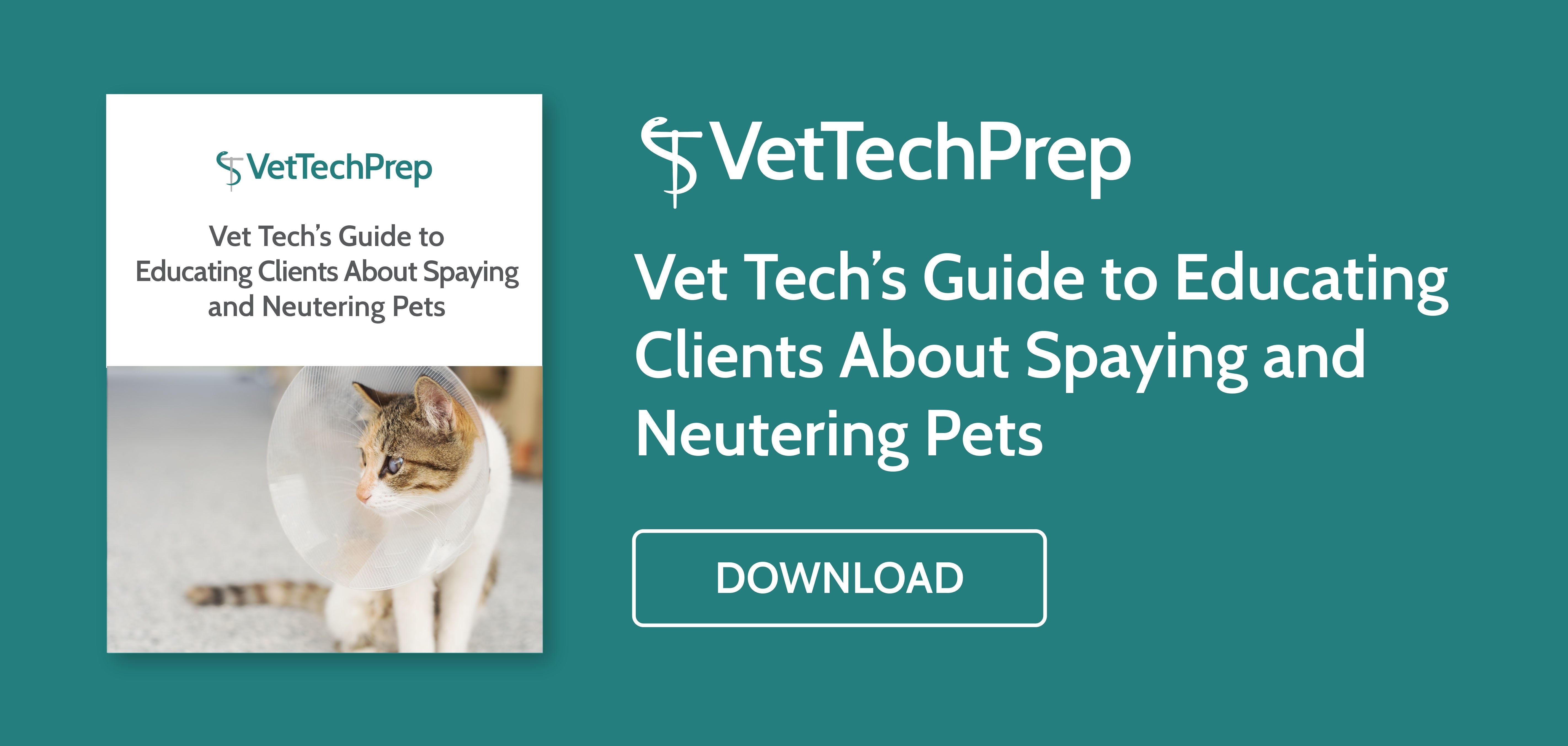
Spay/neuter is an important component of puppy/kitten care and overall veterinary preventive medicine…but why?
There are multiple benefits to spaying and neutering veterinary patients, some of which may be obvious and some that are less obvious.
1. Spayed and neutered pets live longer than intact pets.
Although we don’t know exactly why this is the case, studies show that spayed/neutered pets live longer than intact pets. You might find yourself wondering if this is caused by differences between pet owners or differences in living conditions. Even when controlling for these factors, however, the difference in lifespan between spayed and neutered pets seems to be a consistent finding.(1)
2. Spay/neuter reduces the risk of common reproductive cancers, especially mammary cancer in females.
Mammary cancer, a common cancer of intact female dogs and cats, can be almost entirely prevented by spaying pets at an early age. A female dog spayed before her first heat cycle has only a 0.5% lifetime likelihood of mammary cancer, while a dog spayed after her second heat cycle has a 26% chance of mammary cancer.(2)

Similar risk reductions have been observed in feline patients. In addition to virtually eliminating the risk of mammary cancer, spaying a female pet prevents ovarian and uterine cancer.
Neutering male dogs and cats eliminates the risk of testicular cancer. Additionally, neutering decreases the likelihood of perianal adenomas (masses that occur around the anus) in male dogs.
3. Spaying a female pet eliminates the risk of pyometra, while neutering a male pet decreases the risk of common prostate problems.
Pyometra is a life-threatening uterine infection that occurs in intact dogs and cats. Pyometra is relatively common, with approximately 25% of intact female dogs experiencing pyometra by the time they reach 10 years of age.(1) Without aggressive treatment, pyometra is typically fatal; with treatment, including surgery and hospitalization for supportive care, mortality rates of up to 20% may still be observed.(3) Properly spaying a pet eliminates the risk of this dangerous condition.
Benign prostatic hypertrophy (BPH) is a condition that affects the majority of older intact male dogs. In BPH, the prostate becomes enlarged and can compress the rectum and urethra, leading to difficulties with elimination. Neutering prevents BPH. Additionally, neutering decreases the risk of chronic bacterial infection of the prostate gland.
4. Spaying and neutering lead to behavioral changes that make pets better housepets.
Neutered males are less likely to demonstrate territorial aggression towards strangers, inter-dog or inter-cat aggression, and urine marking. Additionally, neutered males are less likely to roam, reducing their risk of injury.
Female pets also experience positive behavioral changes when spayed. Spayed females are less likely to demonstrate aggression and spaying prevents heat behaviors that may be challenging for pet owners to tolerate.
5. Spaying and neutering prevents overpopulation.
Even with recent advances in shelter medicine and low-cost spay neuter, pet overpopulation is still a very real issue. According to the American Society for the Prevention of Cruelty to Animals, approximately 1.5 million dogs and cats are euthanized in United States animal shelters every year.(4)
While many pet owners feel that they can successfully prevent their pets from breeding, thus avoiding contributing to this problem, the reality is that over half of dog litters are the result of unplanned pregnancy.(2)
Pet owners, especially those who attempt to keep intact male and female pets in the same house, are often unaware of the challenges that can accompany keeping two intact pets separated. Spay/neuter before the age of sexual maturity is the best way to ensure that a pet does not contribute to the issue of pet overpopulation.
Understanding the benefits of spaying and neutering pets at an early age can help ensure the best possible outcomes for your patients and clients.
Resources:
- Houlihan, K. 2017. A literature review on the welfare implications of gonadectomy of dogs. JAVMA. 250(10): 1155-1166.
- ACVS. Mammary Tumors.
- ACVS. Pyometra.
- ASPCA. Pet Statistics: Facts About U.S. Animal Shelters.




